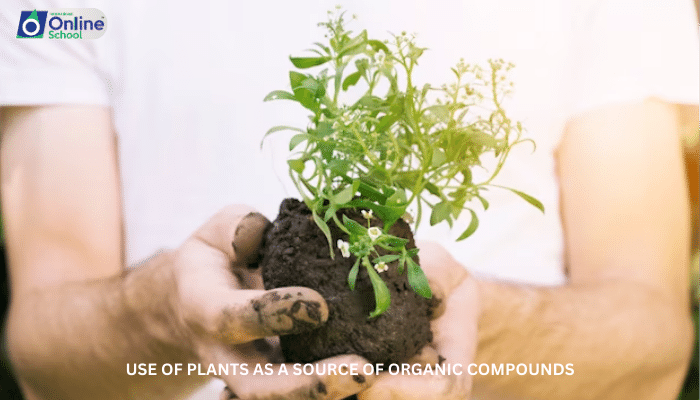
Learning Outcomes
i. Explain the role of plants as primary producers in the synthesis of organic compounds.
ii. Identify the diverse range of organic compounds produced by plants, including carbohydrates, lipids, proteins, and secondary metabolites.
iii. Discuss the extraction and purification techniques used to isolate organic compounds from plants.
iv. Analyze the industrial and pharmaceutical applications of plant-derived organic compounds.
v. Appreciate the significance of plants as a sustainable source of organic compounds for various purposes.
Introduction
Plants, the primary producers in the ecosystem, play a remarkable role in synthesizing a vast array of organic compounds. Through the process of photosynthesis, plants utilize sunlight, carbon dioxide, and water to produce a range of organic molecules that are essential for their growth and survival. These compounds also serve as valuable resources for human consumption and various industrial applications. In this lesson, we will explore the role of plants as a source of organic compounds, delving into the diverse molecules they produce, the methods for their extraction, and their wide-ranging applications.
i. Plants as Primary Producers of Organic Compounds
Plants, through photosynthesis, capture solar energy and convert it into chemical energy, transforming inorganic molecules into organic compounds. This process not only fuels plant growth but also provides the foundation for the entire food chain.
Carbohydrates: Carbohydrates, the primary energy source for plants and animals, are composed of carbon, hydrogen, and oxygen atoms. Common carbohydrates include sugars, starches, and cellulose.
Lipids: Lipids, a diverse group of hydrophobic molecules, serve as energy storage and structural components in plants. They include fats, oils, and waxes.
Proteins: Proteins, essential for plant growth and development, are complex macromolecules composed of amino acids. They play crucial roles in various biological processes.
Secondary Metabolites: Plants synthesize a wide array of secondary metabolites, often with specialized functions, such as defense against herbivores or attracting pollinators. These include alkaloids, terpenes, and flavonoids.
ii. Extraction and Purification of Plant-Derived Organic Compounds
To isolate and purify organic compounds from plants, various techniques are employed:
Solvent Extraction: Plant materials are soaked in solvents to extract desired compounds. The solvent is then evaporated, leaving behind the concentrated extract.
Distillation: Mixtures are heated, and vapors containing the desired compounds are collected and condensed, separating them from non-volatile components.
Chromatography: Mixtures are passed through a stationary phase, where components separate based on their different affinities for the stationary and mobile phases.
iii. Applications of Plant-Derived Organic Compounds
Organic compounds derived from plants have numerous applications:
Food and Agriculture: Plants are the primary source of carbohydrates, lipids, and proteins in human and animal diets. They also provide essential vitamins, minerals, and other nutrients.
Pharmaceuticals: Plant-derived compounds are used in the development of various pharmaceuticals, including antibiotics, anti-inflammatory drugs, and anti-cancer agents.
Industrial Applications: Plant-derived organic compounds are used in various industries, including cosmetics, fragrances, textiles, and biofuels.
Sustainability Considerations: Plants offer a renewable and sustainable source of organic compounds compared to petroleum-based sources, reducing environmental impact.
Plants, as the primary producers of organic compounds, play a fundamental role in the ecosystem and provide a wealth of organic molecules for human consumption and various applications. Understanding the diverse organic compounds produced by plants, the methods for their extraction and purification, and their wide-ranging applications is essential for appreciating the significance of plants as a sustainable source of organic compounds for various purposes.